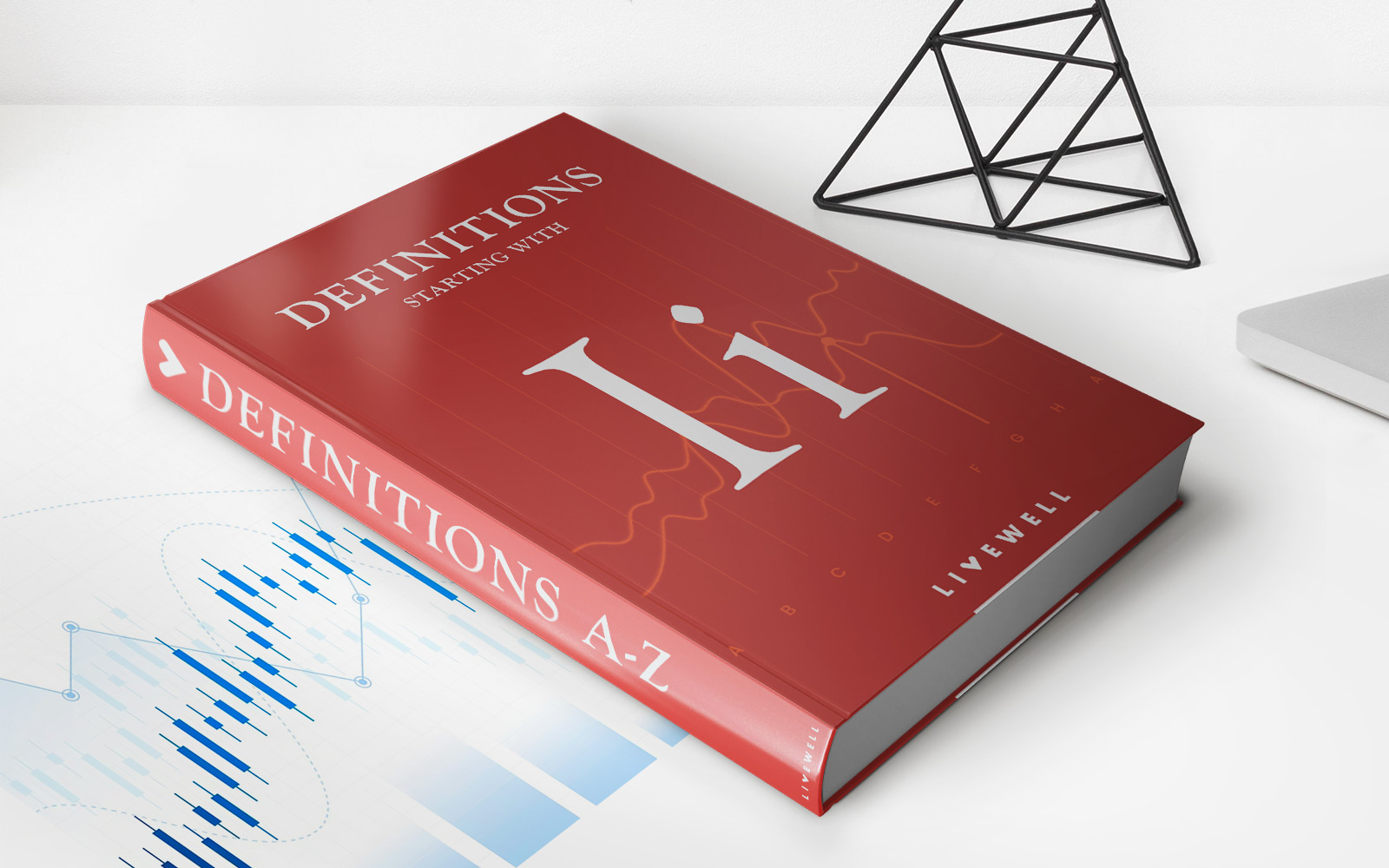Home>Finance>Which Life Insurance Policy Provision Allows A Policyowner To Cancel The Policy?


Finance
Which Life Insurance Policy Provision Allows A Policyowner To Cancel The Policy?
Published: October 15, 2023
Discover the finance provision that allows policyowners to easily cancel their life insurance policies. Protect your financial future with the right policy.
(Many of the links in this article redirect to a specific reviewed product. Your purchase of these products through affiliate links helps to generate commission for LiveWell, at no extra cost. Learn more)
Table of Contents
Introduction
Life insurance is a crucial financial tool that provides protection and peace of mind to individuals and their loved ones. It offers financial security in the event of an untimely death, ensuring that beneficiaries can maintain their standard of living and fulfill their financial responsibilities. However, there may come a time when a policyholder decides to cancel their life insurance policy for various reasons.
In such cases, it is important to understand the provisions and options available for cancelling a life insurance policy. These provisions outline the rights and benefits of policyholders and allow them to make informed decisions based on their individual needs and circumstances.
In this article, we will explore the different types of life insurance policy provisions and focus on the provision that allows a policyowner to cancel their policy – the free look period. We will discuss the importance of policy provisions, the process of cancelling a life insurance policy, and other options available to policyholders.
By gaining a comprehensive understanding of these provisions, individuals can navigate the world of life insurance with confidence and make informed decisions that align with their goals and circumstances.
Understanding Life Insurance Policies
Before delving into the provisions surrounding the cancellation of a life insurance policy, it is essential to have a clear understanding of what life insurance policies entail. Life insurance is a contract between an individual (the policyholder) and an insurance company. The policyholder pays regular premiums to the insurance company in exchange for a death benefit that will be paid out to their designated beneficiaries upon their death.
Life insurance policies vary in terms of coverage, premiums, and duration. The two main types of life insurance policies are term life insurance and permanent life insurance.
Term Life Insurance: Term life insurance provides coverage for a specific period, typically ranging from 10 to 30 years. If the policyholder passes away during the term, the death benefit is paid out to the beneficiaries. However, if the policyholder outlives the term, the coverage expires, and no benefits are paid out. Term life insurance is often more affordable than permanent life insurance and is commonly chosen to cover temporary financial obligations such as mortgage payments or educational expenses.
Permanent Life Insurance: Permanent life insurance offers coverage for the entire life of the policyholder, as long as the premiums are paid. Permanent life insurance includes various types such as whole life insurance, universal life insurance, and variable life insurance. These policies not only provide a death benefit but also accumulate cash value over time. Policyholders can access the cash value through policy loans or withdrawals, offering potential financial flexibility during their lifetime.
Understanding the specific features and terms of a life insurance policy is essential for making informed decisions regarding policy cancellations. Whether one has a term life insurance policy or a permanent life insurance policy, the provisions within the policy dictate the policyholder’s rights and options.
Now that we have a clear understanding of life insurance policies, let’s explore the significance of policy provisions and how they influence the process of cancelling a life insurance policy.
Importance of Policy Provisions
Policy provisions are the specific terms and conditions outlined within a life insurance policy that define the rights, benefits, and responsibilities of both the policyholder and the insurance company. These provisions are crucial as they establish the framework for policy management, including cancellation, policy loans, premium payments, and the payout of death benefits.
Understanding policy provisions is vital for policyholders as they navigate the complexities of life insurance. These provisions outline the rights and benefits available to the policyholder and provide clarity on the terms and conditions of the policy. Additionally, they serve to protect the interests of both parties involved in the contract.
Policy provisions typically cover areas such as the free look period, grace period, surrender value, loan provisions, and policy conversion options. Each provision addresses different aspects of the policy and provides valuable information that the policyholder needs to be aware of.
The importance of policy provisions becomes evident when a policyholder considers cancelling their life insurance policy. These provisions govern the rights and options available to the policyholder during the cancellation process.
By familiarizing themselves with the policy provisions, policyholders can make informed decisions that align with their financial goals and circumstances. Additionally, understanding these provisions can help policyholders avoid any penalties or unexpected consequences that may arise from improper cancellation.
Next, we will explore the various types of life insurance policy provisions and discuss how they affect the cancellation process.
Types of Life Insurance Policy Provisions
Life insurance policies contain several provisions that outline the terms, rights, and responsibilities of the policyholder. These provisions vary depending on the type of policy and the insurance company. Let’s explore some common types of life insurance policy provisions:
- Free Look Period: The free look period is a crucial provision that allows the policyholder to review the policy and make an informed decision. During this period, typically 10 to 30 days after receiving the policy documents, the policyholder can cancel the policy without any penalty and receive a full refund of the premiums paid. The free look period provides a safeguard for policyholders, giving them the opportunity to reconsider their coverage and make any necessary adjustments.
- Grace Period: The grace period provision allows policyholders a certain period, usually 30 days, to make a premium payment after the due date. During this period, the policy remains in force, and the policyholder is given the opportunity to pay the premium without any lapse in coverage. If the policyholder fails to make the payment within the grace period, the policy may lapse, resulting in a loss of coverage.
- Surrender Value: Permanent life insurance policies often have a cash value component that accumulates over time. The surrender value provision allows policyholders to surrender their policy in exchange for a cash value payment. The surrender value may be subject to surrender charges or fees, which reduce the amount received by the policyholder. Surrendering a policy should be carefully considered, as it may result in the loss of the death benefit and potential tax implications.
- Policy Loans: Permanent life insurance policies may offer the provision of policy loans, allowing policyholders to borrow against the cash value within the policy. Policy loans typically accrue interest and must be repaid to maintain the integrity of the policy. Policyholders should be aware of the terms and conditions of policy loans, including any potential impacts on the death benefit and policy performance.
- Policy Conversion: Some term life insurance policies offer the option to convert the policy into a permanent life insurance policy without the need for a medical exam. The policy conversion provision allows policyholders to take advantage of the flexibility and lifelong coverage offered by permanent life insurance. Policyholders must carefully consider the terms and costs associated with the conversion option.
These are just a few examples of the various policy provisions that exist within life insurance policies. It is essential for policyholders to thoroughly review their policy documents and understand the specific provisions that apply to their coverage. By doing so, policyholders can make informed decisions regarding their life insurance policies, including the cancellation process, if needed.
Cancelling a Life Insurance Policy
Life is full of unexpected twists and turns, and circumstances may arise where a policyholder decides to cancel their life insurance policy. While cancelling a life insurance policy is a personal decision, it is crucial to understand the process and implications involved.
Here are the steps to cancel a life insurance policy:
- Review the Policy: Start by reviewing the policy documents and understanding the provisions related to cancellations. Pay close attention to the specific requirements, such as the notice period or any fees associated with the cancellation.
- Contact the Insurance Company: Reach out to the insurance company or your insurance agent to initiate the cancellation process. They will guide you through the necessary steps and provide you with the appropriate forms.
- Submit a Written Request: Typically, insurance companies require a written request for policy cancellation. Include your policy details, personal information, and the reason for cancellation in the letter. Ensure that you keep a copy of the request for your records.
- Provide Required Documentation: In some cases, insurance companies may request additional documentation to process the cancellation, such as proof of identity or original policy documents. Be prepared to provide any necessary paperwork as requested.
- Pay Attention to Timelines: Be mindful of any notice periods mentioned in the policy provisions. Some policies require a specific notice period before the cancellation takes effect. Adhering to these timelines ensures a smooth cancellation process.
- Receive Confirmation: After submitting the cancellation request, the insurance company will review it and provide confirmation of the policy cancellation. Keep this confirmation document for your records.
It is important to note that cancelling a life insurance policy may have financial implications. For example, cancelling a permanent life insurance policy may result in surrender charges and the loss of accumulated cash value. Additionally, cancelling a policy means that beneficiaries will no longer receive the death benefit upon the policyholder’s passing.
Therefore, before making a final decision, consider consulting with a financial advisor or insurance professional to understand the potential consequences and explore any alternatives available.
Now, let’s explore a key provision that plays a significant role in the cancellation process – the free look period.
Key Provision: Free Look Period
One important provision to consider when contemplating the cancellation of a life insurance policy is the free look period. The free look period is a valuable provision that allows policyholders to review their policy in detail after its purchase and make an informed decision without any financial penalty.
During the free look period, which typically lasts for 10 to 30 days after receiving the policy documents, policyholders have the opportunity to thoroughly examine their policy, understand its terms, conditions, and benefits, and assess whether it aligns with their financial goals and needs.
Here are some key aspects of the free look period:
- No Penalty Cancellation: During the free look period, policyholders have the right to cancel the policy without any penalty or financial loss. If the policy is cancelled within this period, the insurance company is obligated to refund the premiums paid. The refund will typically be the full amount of the premiums, although any fees or administrative costs may be deducted.
- Protection for Consumers: The free look period provision acts as a safeguard for policyholders, ensuring that they have sufficient time to carefully review their policy and understand its terms. It serves as a consumer protection measure, allowing individuals to make an informed decision before fully committing to the policy.
- Considerations During the Free Look Period: During the free look period, it is essential to thoroughly examine the policy documents, paying attention to the coverage amount, premiums, exclusions, and any riders or additional benefits. It is also prudent to compare the policy with other available options in the market to ensure that it meets your specific needs.
The free look period helps policyholders avoid buyer’s remorse and provides an opportunity to correct any misunderstandings or discrepancies. It allows individuals to assess whether the policy truly meets their expectations and financial objectives.
It is important to note that the free look period may vary depending on the insurance company and the policy type. Policyholders should carefully review their policy documents to determine the specific duration of the free look period.
While the free look period is a valuable provision, it is essential to make a decision within this period if you decide to cancel the policy. Missing the deadline will result in the policy remaining in force, and subsequent cancellation may incur charges or fees. Therefore, if you are considering cancelling your policy, it is advisable to initiate the process as soon as possible within the free look period.
Next, let’s explore other options available for cancelling a life insurance policy outside of the free look period.
Other Options for Cancelling a Life Insurance Policy
While the free look period provides a convenient window for cancelling a life insurance policy without financial repercussions, there are other options available for policyholders who wish to cancel their policies outside of this period. These options may vary depending on the type of policy and the insurance company. Here are some alternatives to consider:
- Surrendering the Policy: If you have a permanent life insurance policy with accumulated cash value, you may choose to surrender the policy. Surrendering the policy involves cancelling the coverage and receiving a cash value payout. However, be aware that surrendering a policy may result in surrender charges or fees, which can significantly reduce the cash value received.
- Selling the Policy: In certain circumstances, you may have the option to sell your life insurance policy in a process known as a life settlement. This involves selling your policy to a third party, such as a life settlement provider or investor, in exchange for a lump sum payment. However, eligibility and potential financial implications can vary, so careful consideration and professional advice are advisable in such situations.
- Exercising Policy Conversion: If you have a term life insurance policy that offers a conversion option, you may choose to convert your policy into a permanent life insurance policy. This allows you to maintain coverage while transitioning to a different type of policy that better suits your needs. Keep in mind that conversion options may have specific timeframes or limitations, so timely action is essential.
- Allowing the Policy to Lapse: If you decide not to make any further premium payments, the policy may eventually lapse due to non-payment. This option may be suitable if you no longer require the coverage and are willing to forgo any potential benefits or future death benefit payouts.
- Considerations and Professional Guidance: Regardless of the option chosen, it is crucial to carefully evaluate the financial implications, policy conditions, and potential tax consequences associated with cancelling a life insurance policy. Consulting with a financial advisor or insurance professional can provide valuable insights and help you make well-informed decisions aligned with your unique circumstances.
When considering cancelling a life insurance policy, it is vital to weigh the benefits, costs, and potential alternatives available. Each option has its own pros and cons, and what may be suitable for one person may not be the best choice for another.
Remember, life insurance is designed to provide financial protection and peace of mind. Before making any decisions, assess your current financial situation, future needs, and long-term objectives. Considerations like dependents, outstanding debts, and overall financial stability can play a significant role in determining if cancelling your life insurance policy is the right step for you.
Next, let’s summarize the key points discussed in this article.
Conclusion
Cancelling a life insurance policy is a significant decision that requires careful consideration and understanding of the policy provisions. Whether you are in the free look period or considering cancellation outside of this period, it is important to evaluate your financial needs, future goals, and available options before proceeding.
Policy provisions, such as the free look period, grace period, surrender value, policy loans, and policy conversion, play a vital role in the cancellation process. These provisions outline your rights, benefits, and responsibilities as a policyholder, providing guidance for making informed decisions about your life insurance coverage.
When contemplating cancellation, it is crucial to review your policy documents, seek professional advice if necessary, and consider any potential financial implications. Surrendering the policy, selling it in a life settlement, exercising the conversion option, or allowing it to lapse are some options to explore, each with its own considerations and consequences.
Remember, life insurance provides financial security and peace of mind for you and your loved ones. Before cancelling your policy, assess your current financial situation, future needs, and long-term goals to ensure that you are making the best decision for your circumstances.
If you are unsure about your options or need assistance, consult with a financial advisor or insurance professional who can provide guidance tailored to your specific needs.
By understanding the importance of policy provisions, carefully considering your choices, and seeking professional advice, you can navigate the process of cancelling a life insurance policy with confidence and make informed decisions that align with your financial wellbeing.














